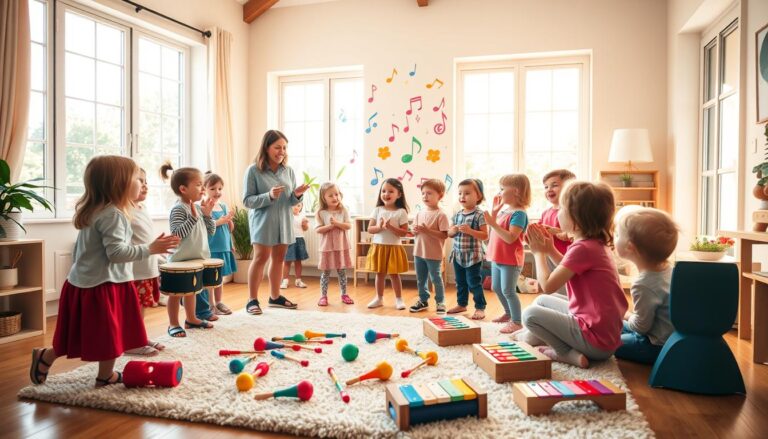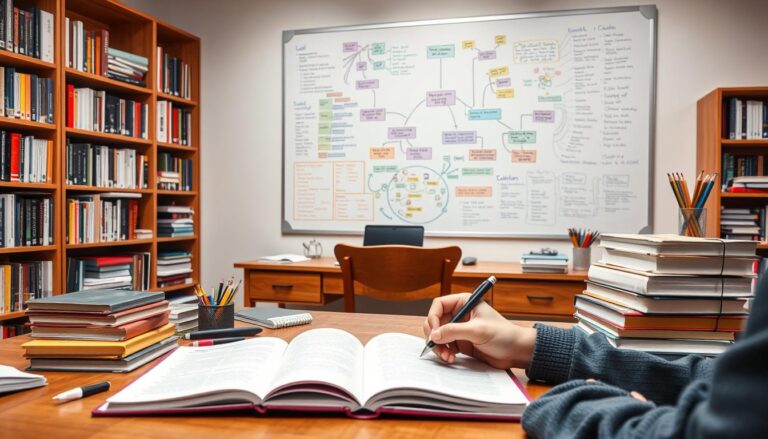Creating a Pre-School Curriculum for Home Learning
Have you ever wondered how to make learning fun and effective for your little one while staying at home? Crafting a structured yet flexible program can be the key to unlocking their potential. We’re here to guide you through the process, offering practical tips and insights to create a balanced approach that fits your family’s needs.
Starting a learning journey at home doesn’t have to be overwhelming. With the right tools and activities, you can foster curiosity and growth in your child. From reading and counting to creative art and science projects, we’ll show you how to blend structured lessons with child-led exploration.
Our guide is designed to help you build a program that adapts to your daily routine while keeping your child engaged. Whether you’re looking for ideas to teach numbers, colors, or shapes, we’ve got you covered. For more resources on structured learning, check out our high school curriculum for inspiration.
Understanding the Benefits of Home Learning for Preschoolers
Discover how tailored learning environments can benefit your child’s early development. Home-based education offers unique advantages that foster growth, curiosity, and family bonding. Let’s explore why this approach is gaining popularity among families.
Flexibility and Family-Centered Learning
One of the biggest perks of learning at home is flexibility. Families can adjust schedules to fit daily routines, extracurricular activities, and personal commitments. This adaptability reduces stress and allows for a more relaxed learning atmosphere.
Parents play a central role in their child’s education, creating a nurturing environment. Shared activities like reading, art projects, and outdoor play strengthen family bonds while promoting learning. This hands-on approach ensures that every moment becomes an opportunity for growth.
Building a Strong Early Foundation
Home-based programs lay a solid foundation for academic success. Activities like calendar time, singing, and interactive reading help develop essential skills. Research shows that hands-on learning enhances cognitive development and creativity.
By integrating sensory play and guided lessons, we create a balanced learning ecosystem. This approach adapts to the child’s pace and interests, making education both effective and enjoyable.
| Aspect | Traditional Learning | Home Learning |
|---|---|---|
| Schedule | Fixed | Flexible |
| Cost | Higher | Cost-effective |
| Activities | Limited | Diverse and hands-on |
| Family Involvement | Minimal | High |
Designing a Comprehensive home preschool curriculum
Crafting a well-rounded program for young learners requires careful planning and creativity. A balanced approach ensures that children remain engaged while developing essential skills. Let’s explore how to structure a program that combines structured lessons with exploratory play.
Establishing a Balanced Schedule
A well-planned schedule is the foundation of an effective program. Start the day with calendar time and interactive songs to set a positive tone. Include focused activities like alphabet reviews and counting exercises to build academic skills.
Incorporate free-form play to encourage creativity and exploration. Reading sessions and journaling time can help develop literacy skills. Segmenting the day ensures a mix of structured and child-led activities.
Selecting Educational Resources and Hands-On Activities
High-quality resources make learning engaging and effective. Choose books that align with your child’s interests and developmental stage. Art supplies and science kits can enhance hands-on learning experiences.
Thematic activities, such as exploring letters or counting with objects, keep the program dynamic. Sensory play, like sand or water activities, supports cognitive and motor development. For more ideas, check out this detailed guide on preschool programs.
Integrating Child-Directed and Adult-Guided Learning
Balancing child-led activities with adult-guided instruction is key. Allow children to explore their interests while providing gentle guidance. Adapt lesson plans based on their progress and curiosity.
Creative projects, like painting or building, complement academic preparation. Regular reviews and adjustments ensure the program remains aligned with your child’s evolving needs. This approach fosters a love for learning while building a strong foundation.
| Activity Type | Examples | Benefits |
|---|---|---|
| Structured Lessons | Alphabet reviews, counting exercises | Builds academic skills |
| Exploratory Play | Sensory play, art projects | Encourages creativity |
| Interactive Sessions | Reading, singing | Develops literacy and social skills |
Implementing Daily Activities and Lesson Demos
Daily activities play a vital role in shaping a child’s early learning journey. By incorporating structured lessons and exploratory play, we create a balanced routine that keeps children engaged and curious. Let’s explore practical ways to implement these activities effectively.
Examples of Day-by-Day Activities
A well-planned day includes a mix of structured and exploratory activities. Start with circle time to build social skills and a sense of community. Follow this with alphabet reviews and counting games using everyday items like pumpkin seeds or flowers.
Incorporate sensory play to enhance cognitive and motor skills. Activities like sand or water play are both fun and educational. Outdoor games like hopscotch or snowball toss promote physical development while keeping the day dynamic.
Tips for Adapting Lessons to Your Child’s Interests
Adapting lessons to your child’s interests ensures they remain engaged. If they enjoy art, extend activity times for painting or crafting. Reuse successful activities as learning centers to reinforce past lessons.
Integrate indoor and outdoor activities based on weather conditions. For example, use construction paper for indoor art projects on rainy days. This approach maintains continuity in learning while keeping it flexible.
| Activity Type | Examples | Benefits |
|---|---|---|
| Structured Lessons | Alphabet reviews, counting exercises | Builds academic skills |
| Exploratory Play | Sensory play, art projects | Encourages creativity |
| Interactive Sessions | Reading, singing | Develops literacy and social skills |
For more structured learning ideas, explore our pre-school program, designed to foster holistic development through interactive activities and personalized attention.
Conclusion
Building a strong foundation for early learning doesn’t have to be complicated. By blending structured lessons with playful activities, we create a program that adapts to your child’s needs. Flexibility and creativity are key to keeping them engaged and curious.
Choosing the right resources and maintaining a balanced schedule ensures a smooth learning journey. Simple, cost-effective materials can make a big difference. Regular reviews and adjustments help tailor the program to your child’s progress.
We encourage you to explore additional guides and resources to enhance your efforts. With thoughtful planning, you can foster a love for learning that lasts a lifetime. Start today and watch your child thrive!







